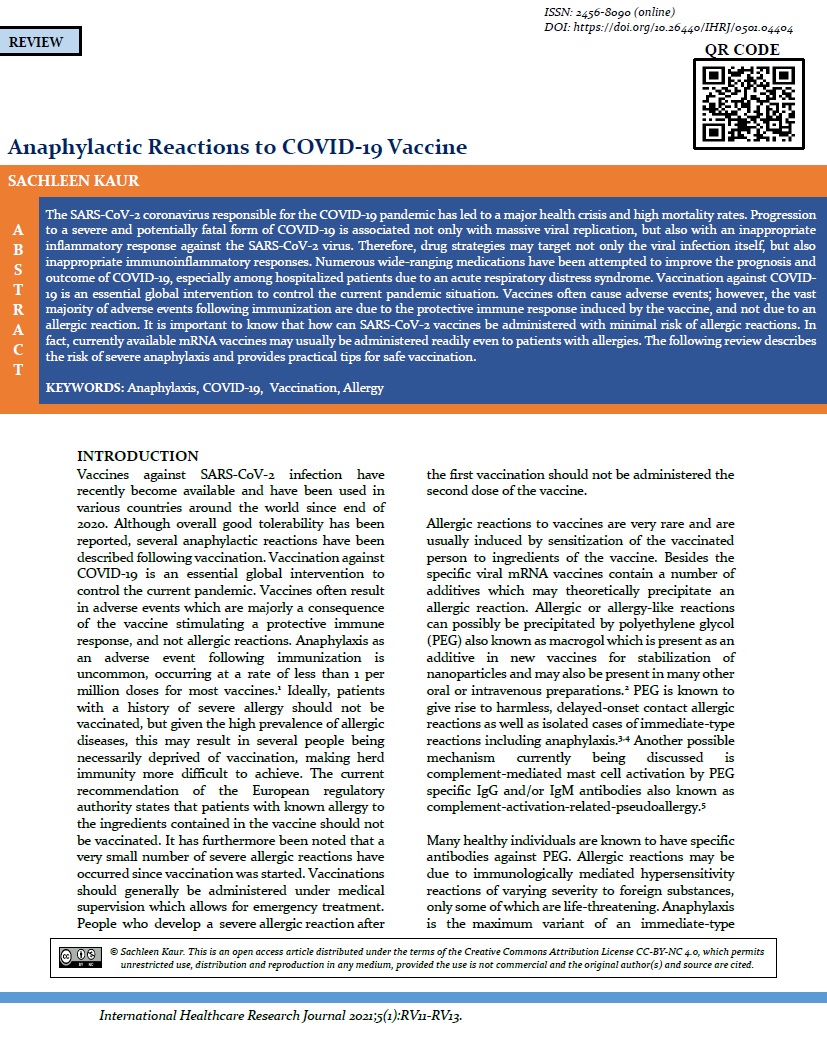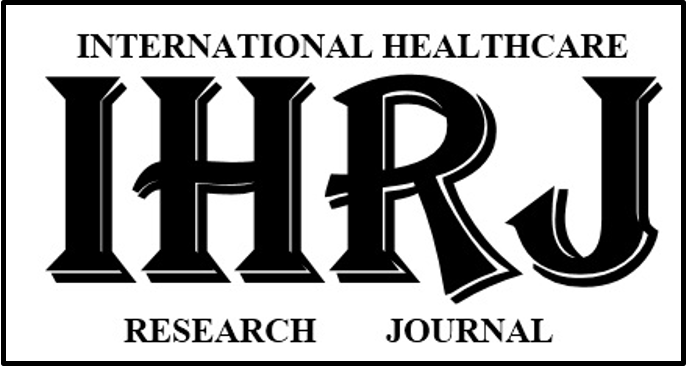Anaphylactic Reactions to COVID-19 Vaccine
Abstract
The SARS-CoV-2 coronavirus responsible for the COVID-19 pandemic has led to a major health crisis and high mortality rates. Progression to a severe and potentially fatal form of COVID-19 is associated not only with massive viral replication, but also with an inappropriate inflammatory response against the SARS-CoV-2 virus. Therefore, drug strategies may target not only the viral infection itself, but also inappropriate immunoinflammatory responses. Numerous wide-ranging medications have been attempted to improve the prognosis and outcome of COVID-19, especially among hospitalized patients due to an acute respiratory distress syndrome. Vaccination against COVID-19 is an essential global intervention to control the current pandemic situation. Vaccines often cause adverse events; however, the vast majority of adverse events following immunization are due to the protective immune response induced by the vaccine, and not due to an allergic reaction. It is important to know that how can SARS-CoV-2 vaccines be administered with minimal risk of allergic reactions. In fact, currently available mRNA vaccines may usually be administered readily even to patients with allergies. The following review describes the risk of severe anaphylaxis and provides practical tips for safe vaccination.
Downloads
References
Turner PJ, Ansotegui IJ, Campbell DE, Cardona V, Ebisawa M, El-Gamal Y, et al. WAO Anaphylaxis Committee. COVID-19 vaccine-associated anaphylaxis: A statement of the World Allergy Organization Anaphylaxis Committee. World Allergy Organ J. 2021; 14(2):100517. https://doi.org/10.1016/j.waojou.2021.100517.
Wenande E, Garvey LH. Immediate-type hypersensitivity to polyethylene glycols: a review. Clin Exp Allergy. 2016;46(7):907–22.
Bruusgaard-Mouritsen M, Johansen J, Garvey L. Allergy to polyethylene glycol has significant impact on daily life. Authorea. 2020. https://doi.org/10.22541/au.159402782.23497540
Zhou ZH, Stone Jr. CA, Jakubovic B, Phillips EJ, Sussman G, Park J, et al. Anti-PEG IgE in anaphylaxis associated with polyethylene glycol. J Allergy Clin Immunol Pract. 2021;9(4):1731-3.e3. https://doi.org/10.1016/j.jaip.2020.11.011.
Hamad I, Hunter AC, Szebeni J, Moghimi SM. Poly(ethyleneglycol)s generate complement activation products in human serum through increased alternative pathway turnover and aMASP-2-dependent process. Mol Immunol. 2008;46(2):225–32.
Maggio E. Polysorbates, biotherapeutics and anaphylaxis: a review. Bioprocess Int; 2017. (online Article). Available at: https://bioprocessintl.com/manufacturing/formulation/polysorbates-biotherapeutics-and-anaphylaxis-a-review/. [Last Accessed on 10th February, 2021]
Stone Jr CA, Liu Y, Relling MV, et al. Immediate hypersensitivity to polyethylene glycols and polysorbates: more common than we have recognized. J Allergy Clin Immunol Pract. 2019;7(5):1533–1540.e8. https://doi.org/10.1016/j.jaip.2018.12.003
Badiu I, Geuna M, Heffler E, Rolla G. Hypersensitivity reactionto human papillomavirus vaccine due to polysorbate 80. BMJ Case Rep. 2012; 2012:bcr0220125797. https://doi.org/110.1136/bcr.02.2012.5797.

Copyright (c) 2021 Sachleen Kaur

This work is licensed under a Creative Commons Attribution-NonCommercial 4.0 International License.


